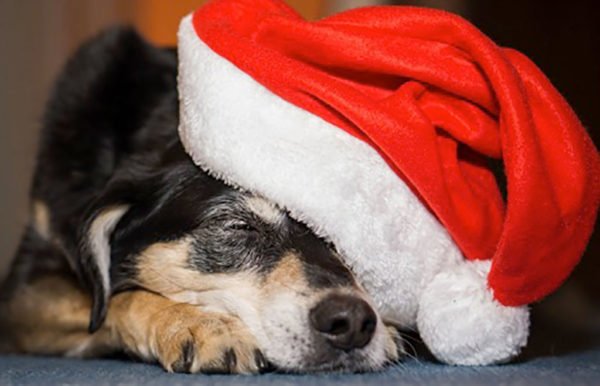The following bi-weekly column is written and sponsored by Bark + Boarding, which provides a heart-centered and safe environment for your pets. Conveniently located at 5818-C Seminary Road in Bailey’s Crossroads, Bark & Boarding offers doggy daycare, boarding, grooming, walking and training services, plus in-home pet care.
by Chelsea Pennington, Bark + Boarding Writer and Animal Enthusiast
The start of the New Year is often a time when we, as humans, decide to make a change in our lives and set higher goals. But making resolutions isn’t just for us! There are lots of little ways you can decide to improve your pet’s life this year by changing some habits.
Eat Healthier
Just like us, what pets eat can affect their quality of life.
This year, you can help keep them healthy by incorporating new habits into your routine. Measuring their food, instead of eyeballing it, every time you feed them ensures they’re not overeating.
You can also make a goal to stop feeding your pet table scraps. Their dog food is specially formulated to give them the nutrients they need and the appropriate amount of calories. Feeding them leftovers can cause them to gain weight and possibly suffer from gastrointestinal issues.
Create a Grooming Routine
The type and frequency of grooming that your pet needs will depend on their breed and type of coat, but there’s no time like the present to figure out what works best for your furry friend.
Brushing your pet removes excess fur, which means there’s less getting on your furniture and clothes. It also helps spread oils from the skin to the fur, causing the coat to look shiny and healthy.
Part of your routine should include oral hygiene. Brushing your dog or cat’s teeth prevents tartar and plaque, and helps fight bad breath. Regular appointments with a professional groomer are a great way to easily maintain your pet’s good looks and hygiene.
Don’t Forget the Details
Within the span of a year, a lot can change such as addresses, phone numbers and more information that is key to making sure your pet gets returned to you if they’re lost. In too many cases, people only realize the info on their pet’s tag is out of date after they’ve escaped.
If any of your contact information has changed within the past year, be sure to update their tags and microchip as soon as possible.
Learn Some New Tricks
Your pet doesn’t need to be young or disruptive to attend a training class. These classes offer a challenge to dogs to keep them stimulated and also encourages bonding between pet and owner.
Even if you don’t want to go to an official class, there are plenty of resources online you can find to help you teach your dog a new trick at home. Learning new tricks and practicing old ones help keep your dog’s brain healthy and engaged.
Focus on Their Health
Yearly examinations for your pet are an important part of a good healthcare routine. If you haven’t already, schedule an appointment for your pet to make sure they are healthy.
Regular check-ups can catch conditions like diabetes, arthritis and obesity in much earlier stages, which makes them easier to treat and manage. Similarly, be sure to stay on top of preventatives like monthly flea, tick and heartworm medicines.
It may seem like a big cost up front, but it’s sure to save you money in the long run by not having to pay for these problems after they arise.
Do Some Cleaning
When was the last time you cleaned your pet’s food and water bowl? Or their bedding?
Their eating dishes should be washed weekly with hot, soapy water. Any bedding they use should be washed weekly as well and if they frequently use a crate or carrier, it should be cleaned using pet-safe products. All of these prevent the build-up of disease-causing bacteria and keep your pet (and you!) healthy.
Send an Update
Just like the holidays are a common time for humans to send cards with family updates, the New Year can be a great time to do the same with your pet.
If you adopted them from a shelter or a rescue group, take a moment to snap a photo and send them an update so they know how their old friend is doing. We know that the volunteers will be thrilled to know how much your pet loves their forever home!
Looking for more tips, interested in adorable pet pics or just want to get more information on what we do? Stay connected with Bark + Boarding on Facebook, Instagram and our website.
Click here to check out our short video about this article
Mention this article for a free evaluation and click here to sign up for one today. If you have a question about your pet, feel free to come in or email [email protected] any time.





